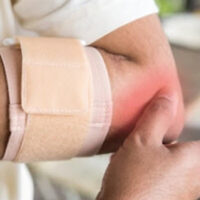Sustaining a Soft Tissue Injury in an Accident

It is often easy, after being involved in an accident, to ignore signs of muscle stiffness or bruising. These types of symptoms, however, should not be overlooked, as they could be evidence of a serious muscle strain, torn ligament, or other soft tissue injury, which can cause a significant amount of pain for accident victims.
Recovering after an accident can be difficult, especially for those who are required to take time off from work, so if you recently sustained a soft tissue injury in an accident that was not your fault, it is important to speak with an experienced Fort Lauderdale auto accident attorney about seeking compensation for your losses.
Common Soft Tissue Injuries
The tissues that affect movement, including the skin, muscles, tendons, and ligaments, are often susceptible to injury in serious accidents. Caused by acute trauma, soft tissue injuries that occur in these situations are the result of an external force impacting a person’s body. How severe these injuries are, however, depends on the type of accident in question, as well as the force of the impact suffered by the victim. Victims of rear-end collisions, for example, often suffer from whiplash, which is one form of an acute traumatic soft tissue injury that can range in severity from minor to seriously debilitating. Other common examples of soft tissue injuries that are the result of acute trauma include:
- Sprains, which occur when a ligament is partially torn and often involve the ankles, knees, and wrists;
- Strains, which involves damage to the tendons or muscles;
- Contusions, which occur after a blunt force impact and due to the presence of blood in the tissue, often result in pain, swelling, and discoloration;
- Lacerations, or open wounds that expose the layers of soft tissue underneath the skin; and
- Herniated discs, which occur when the fluid-filled sacs that act as cushions between the bones and muscles become inflamed.
Soft tissue injuries are not only painful, but notorious for being slow to heal, making it especially important for accident victims to contact an experienced attorney about seeking compensation for injury-related losses.
Severity of Soft Tissue Injuries
Soft tissue injuries are classified based on their severity. For instance, Grade one soft tissue injuries are considered mild and include sprains and tears comprising up to five percent of a joint or ligament. Grade two injuries, on the other hand, are considered moderate and include tears of up to 50 percent of a ligament or joint. Grade three, or severe soft tissue injuries, occur when 100 percent of a ligament or joint is torn or sprained. Finally, soft tissue injuries can escalate to grade four, which means that an avulsion has occurred, or that a ligament has torn completely away from the bone. How soft tissue injuries are treated and the length of time it takes to recover from one depends on their severity. Grade one injuries are often treatable at home with ice, rest, and perhaps a splint or brace, while grade two and three soft tissue injuries almost always require surgery and physical therapy.
Call Our Office Today to Discuss Your Case
If you sustained a soft tissue injury in an accident, please contact the dedicated personal injury lawyers at Boone & Davis by calling 954-566-9919 today to learn more about your legal options.
Resource:
ncbi.nlm.nih.gov/pubmed/3534506
https://www.booneanddavislaw.com/liability-for-accidents-caused-by-teenage-drivers/
